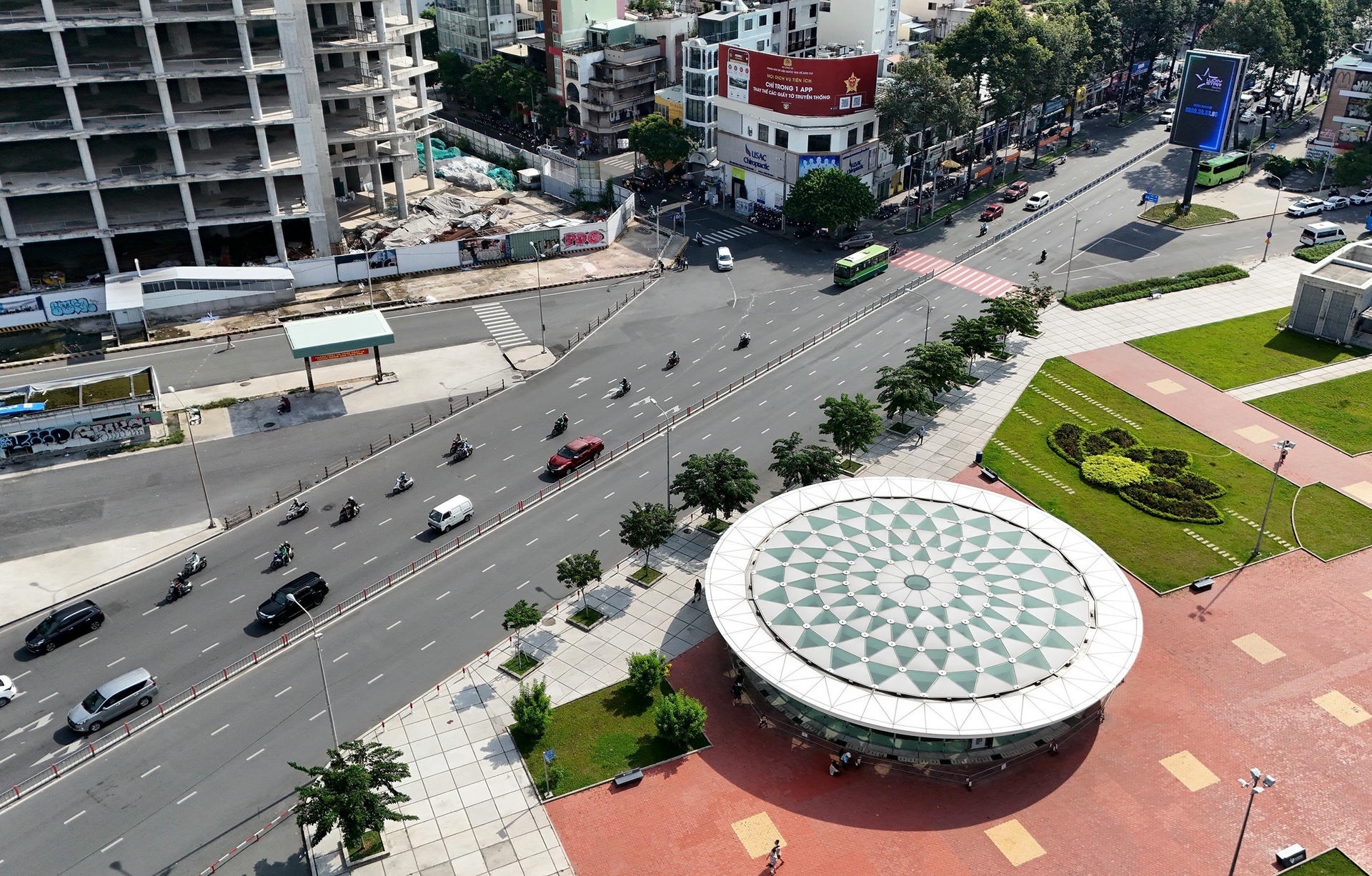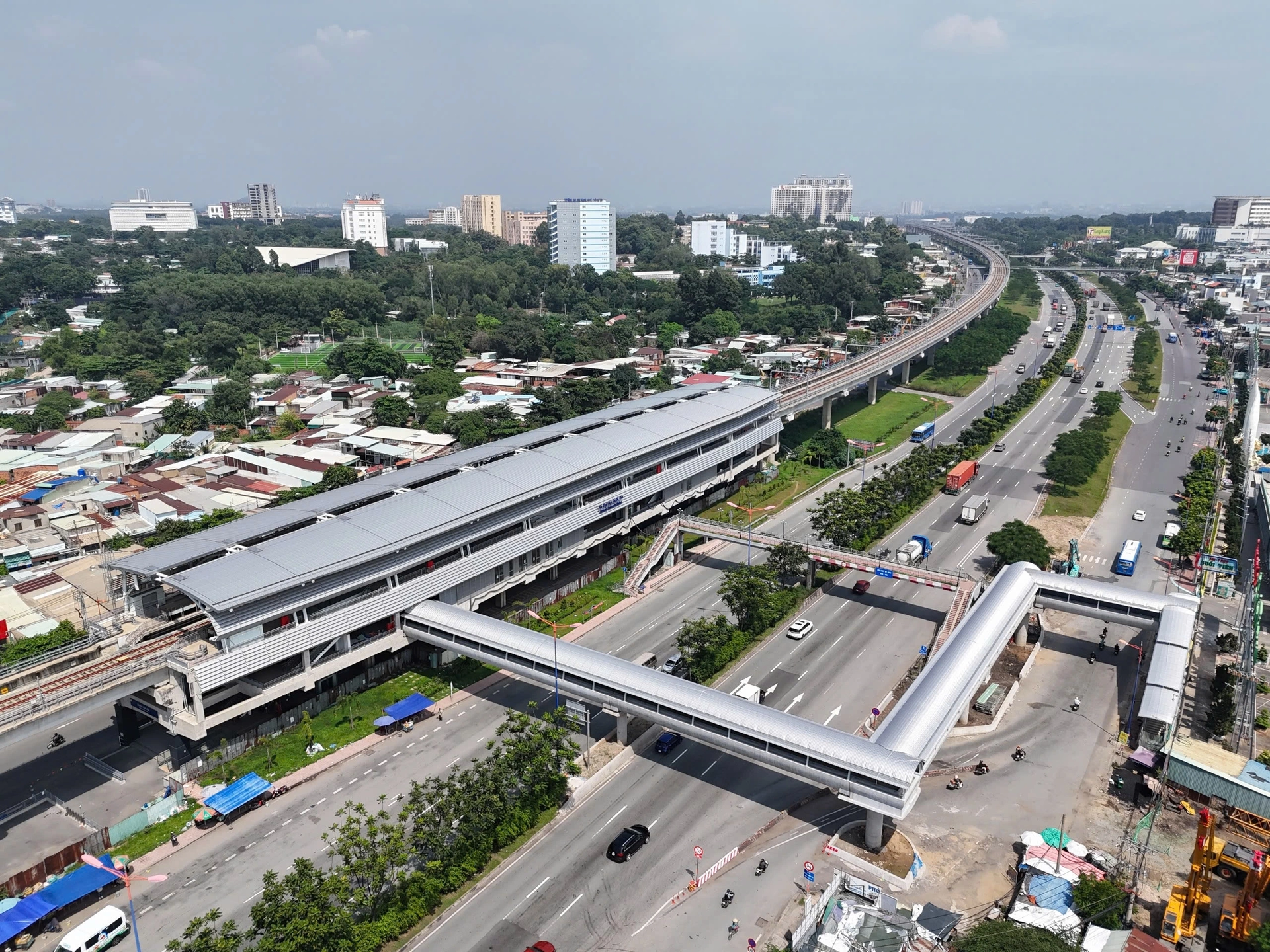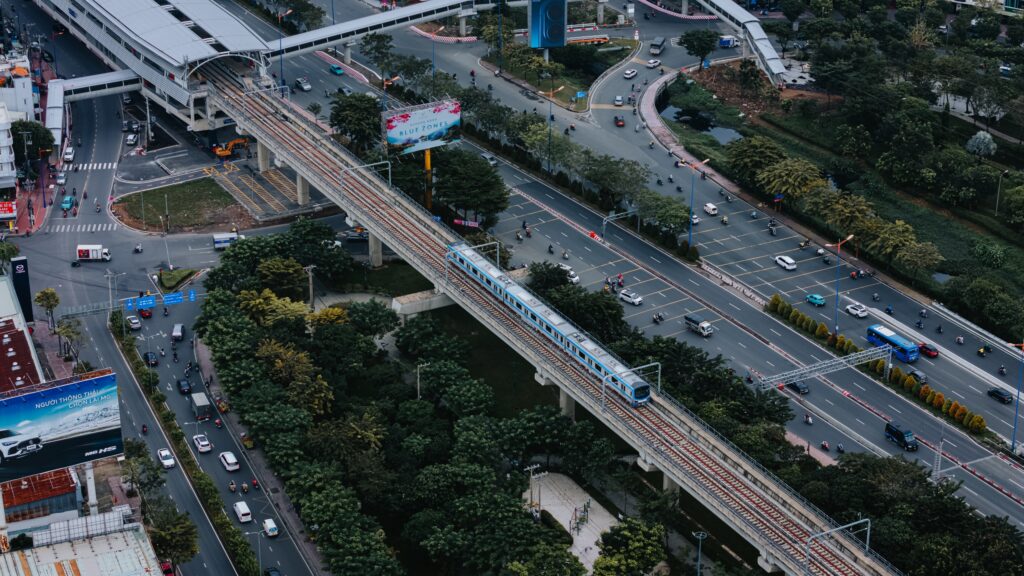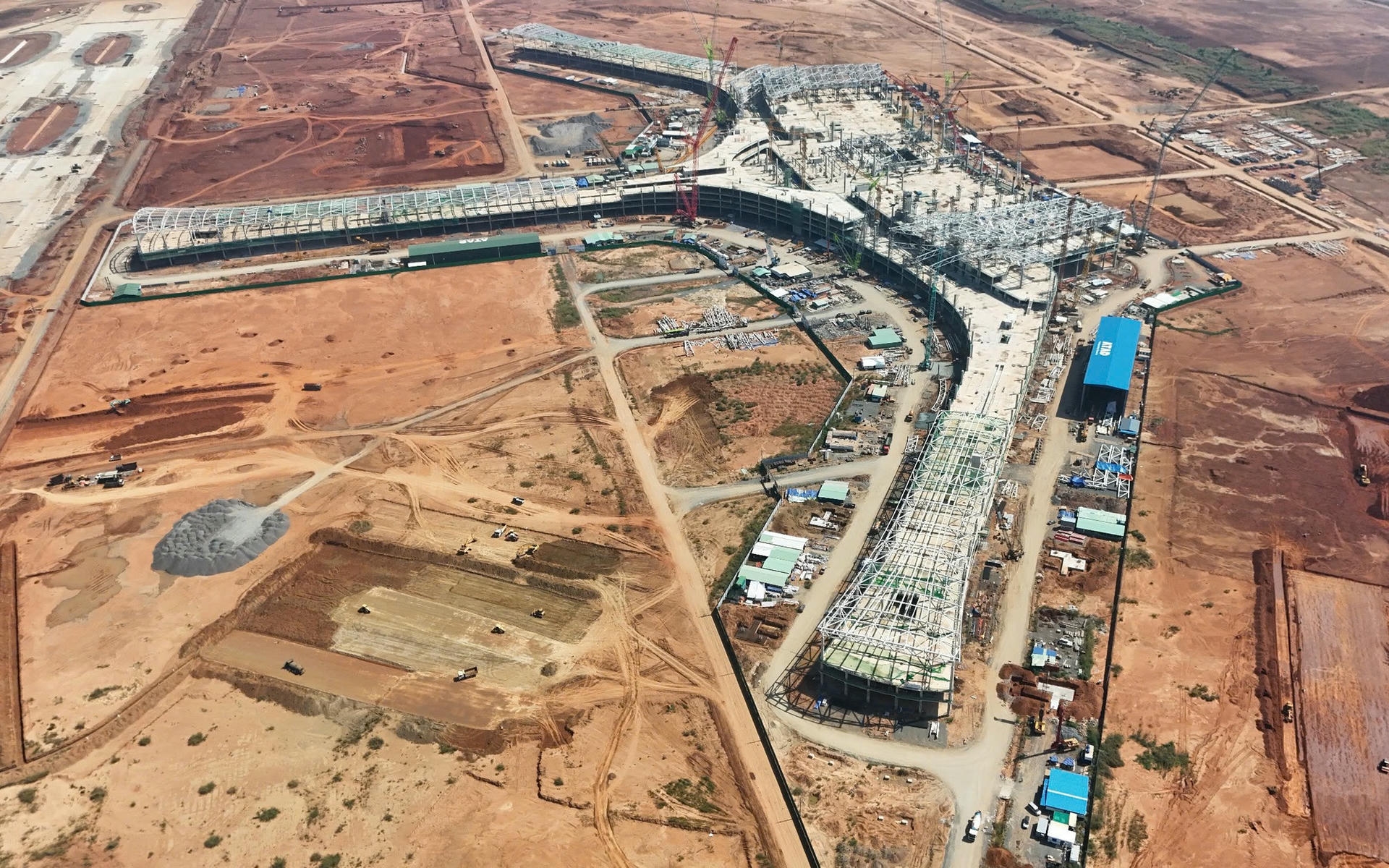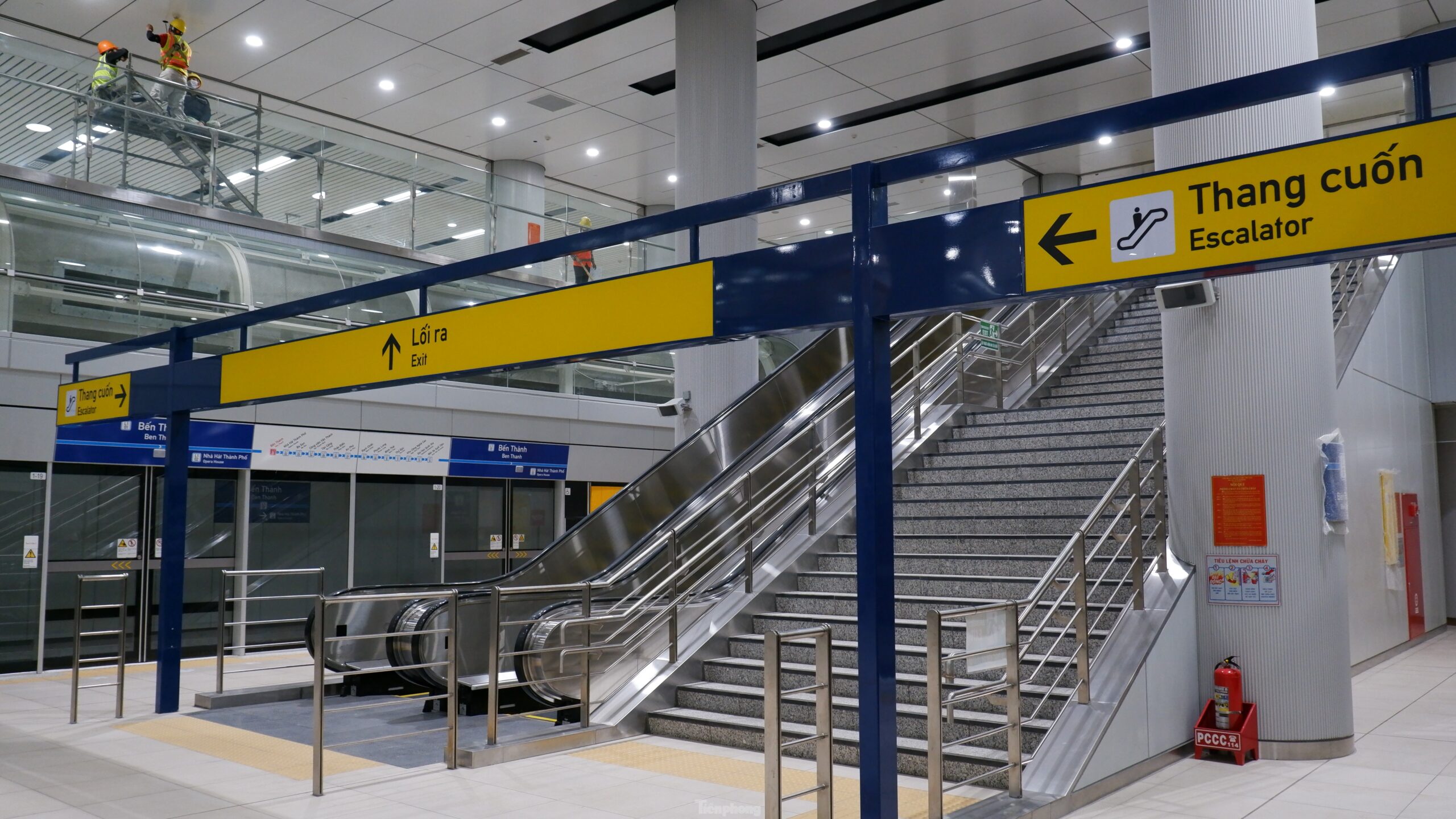VIETNAM’S INFRASTRUCTURE AMBITIONS FROM VISION TO REALITY
Southern Vietnam and Ho Chi Minh City are betting big on transformative infrastructure with Tan Son Nhat International Airport’s Terminal 3, Long Thanh International Airport, and Metro Line 1—all nearing key milestones. For further updates and professional insights on the investment potential of Vietnam real estate market, residential leasing and asset management services by Arcadia Consulting Vietnam, reach us at rs@arcadia-consult.com.vn
Tan Son Nhat International Airport’s Terminal 3: Vietnam’s Gateway Gears Up for Expansion
After two years of construction since December 2022, the long-awaited Terminal 3 is nearing completion, with a projected handover date of March 30, 2025. It will add capacity for 20 million domestic passengers annually, effectively reshaping the airport’s capabilities and alleviating the gridlock that has tested both travelers’ patience and Vietnam’s ability to manage its explosive growth in air travel. With its one basement level and four above-ground floors, the facility promises to handle 7,000 passengers at peak hours, accommodating all Code C and Code E aircraft.
Construction progress underscores a sense of urgency. As of now, 97% of the terminal’s structural work is complete, with crews working steadily to finalize technical and passenger areas, which are already 80% finished. Adjacent to the terminal, the multi-level parking structure—which blends parking with non-aviation services—is 95% complete. The connecting bridge is on track for delivery by February 2025. Meanwhile, architectural finishing touches, including the aluminum roofing, are set to wrap up by December 2024, as teams race to install critical systems such as baggage conveyors and security scanners by early 2025.
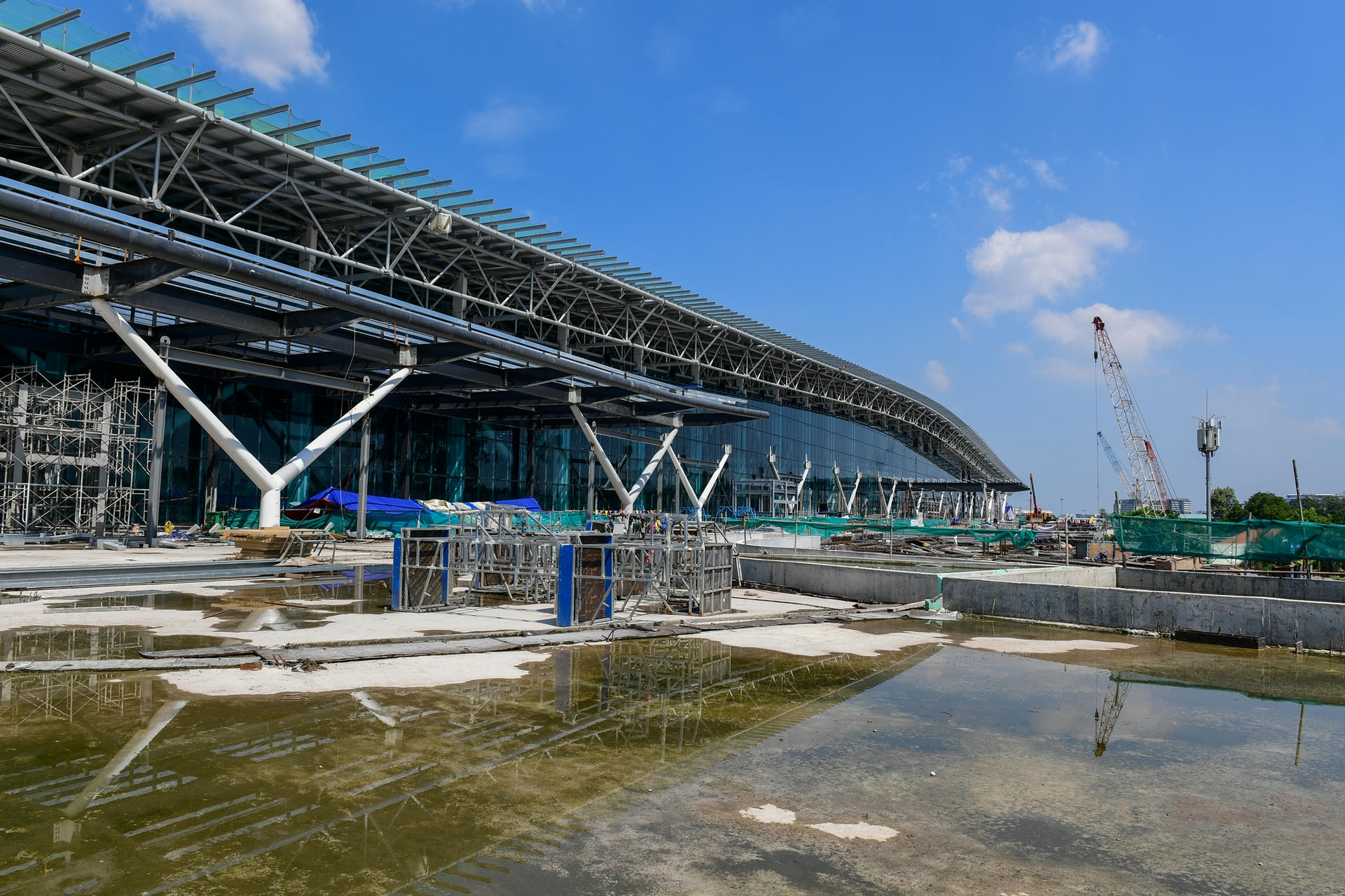
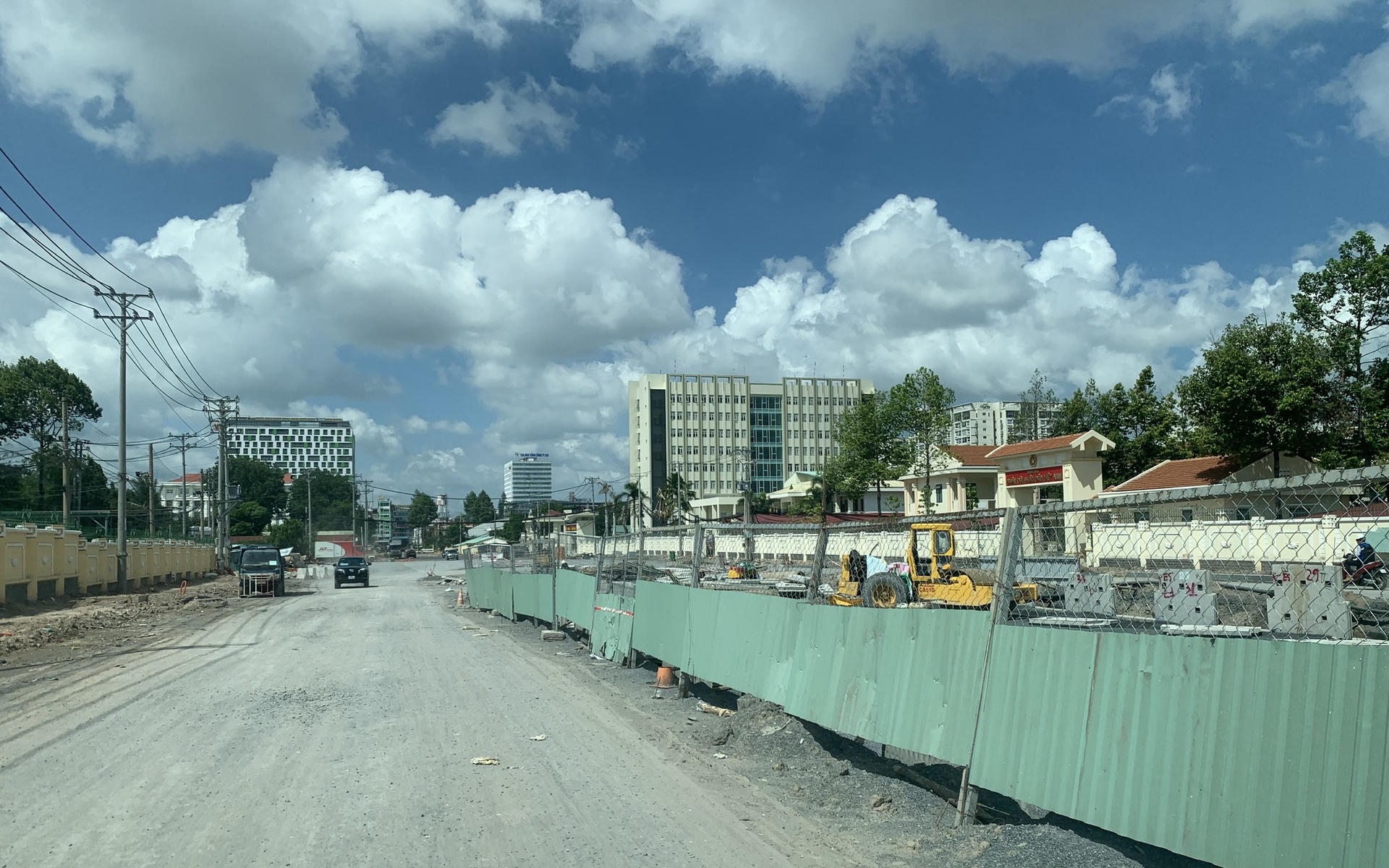
The terminal’s functionality hinges on seamless integration with Ho Chi Minh City’s broader transport network, yet key road projects designed to improve access to T3 are mired in delays. The Tran Quoc Hoan–Cong Hoa road extension, a vital artery connecting the terminal to the city, has completed 88% of its construction. Officials insist that the road will be operational by February 2025, but that optimistic timeline depends on the resolution of land disputes involving 68 households. If the holdouts aren’t resolved by the end of December 2024, the project risks missing the window needed to synchronize with T3’s opening.
Long Thanh International Airport: Vietnam’s Bold Vision Takes Shape
Four years into construction, Long Thanh International Airport is rapidly emerging as the centerpiece of Vietnam’s infrastructure ambitions, and designed to handle 25 million passengers annually in its first phase. Facade installation for the terminal is expected to wrap up by March 2026, with trial operations beginning shortly thereafter. The ambitious target is to have every detail operational by August 31, 2026, a timeline as bold as the project itself. Meanwhile, the control tower, towering above the sprawling construction site, is also progressing steadily. Its concrete core is complete, and the final floors are being expanded, a visual marker of the project’s steady march toward completion.
Construction milestones are being hit, and government officials are doubling down on promises to resolve land disputes and push forward on the critical road links. The T2 route, which links Long Thanh to the Ho Chi Minh City–Long Thanh–Dau Giay Expressway, is crucial for passenger and cargo traffic, yet delays in land clearance threaten to derail progress. The T1 road, another key artery, is also behind schedule, and any further setbacks risk isolating the airport when it opens. For now, optimism prevails.
Metro Line 1: Ho Chi Minh City’s Long-Awaited Leap Forward
For a city of nearly 10 million people, Metro Line 1 represents a cornerstone of economic and urban development after 18 years of being approved in 2007 and constructed since August 2012. By connecting the densely packed streets of District 1 to Thu Duc City, the line is expected to spark investment along its route, raising property values and attracting new businesses.
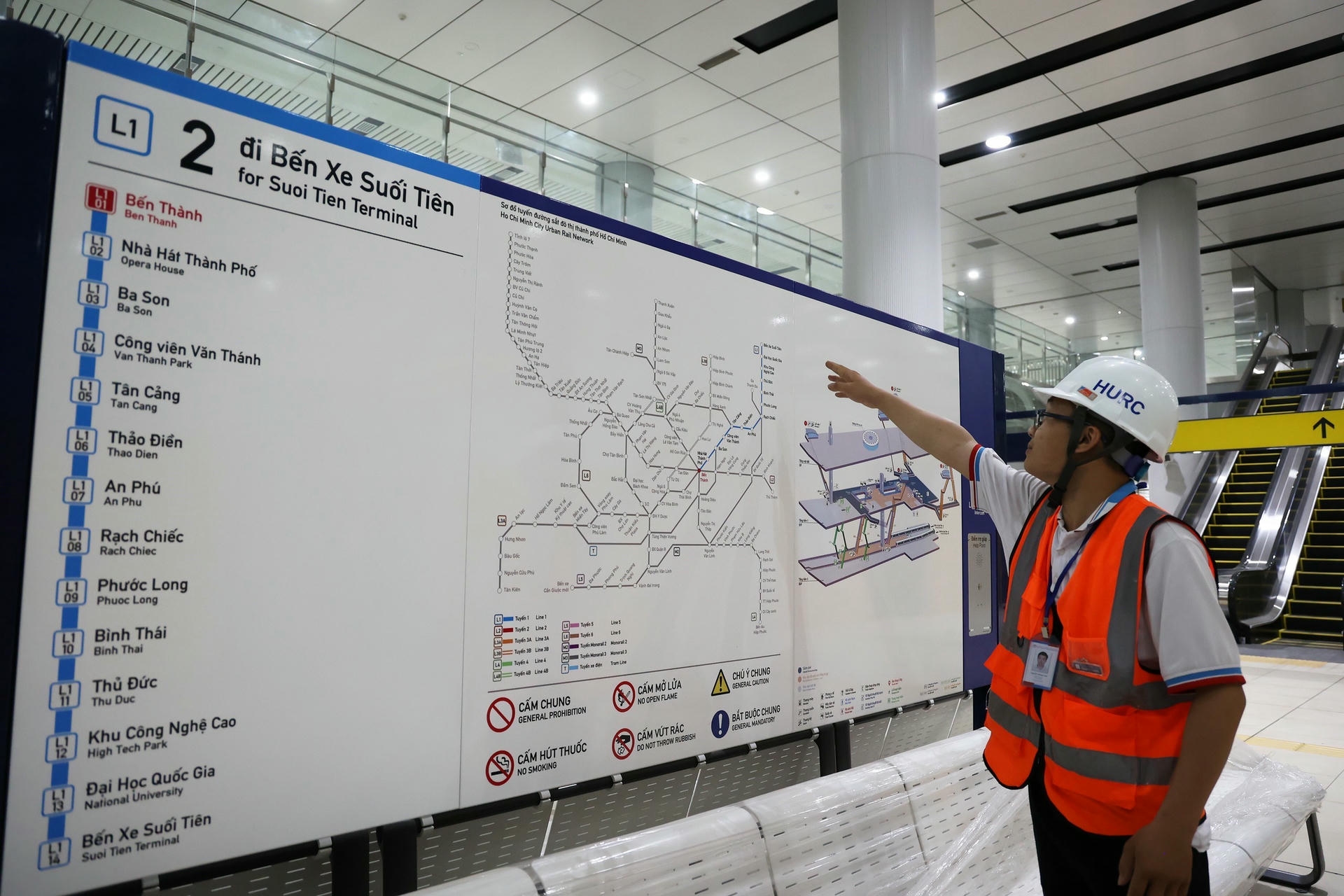
With 14 stations–11 elevated and three underground–the line carves through some of Ho Chi Minh City’s most important neighborhoods, linking the financial and cultural hub of District 1 with suburban industrial complexes and residential zones in Thu Duc City. Riders will board sleek, air-conditioned trains while navigating a cashless payment system designed to minimize friction. Mastercard EMV cards and contactless transit passes with grant access during the free trial period from December 22 to January 20, 2025. In a move that underscores Vietnam’s digital ambitions, passengers can even use their chip-enabled national ID cards to enter stations–a first for the country.
At its heart is the four-story Ben Thanh Underground Station spanning 235 meters in length and 30 meters deep. The station’s ground level is a sprawling concourse that doubles as a gateway to an 18,100-square-meter commercial center and a 21,500-square-meter underground plaza. It is part train station, part urban destination, designed to blend transportation with commerce and community. In time, Ben Thanh will serve as a central interchange for future metro lines, transforming it into the beating heart of a growing network. – Thanh Nien, CafeF, Lao Dong, Tien Phong.
